How to understand the language of cats
- Reviews: 3
- Views: 4583

Many owners of cats say that they live with their Pets in perfect harmony, although in the impulse of the manifestation of sincere love often find themselves trapped. Only at first glance it seems that the humming stubborn and willful – in fact, they are constantly communicating with others, demonstrating the mood and intentions by all available means.
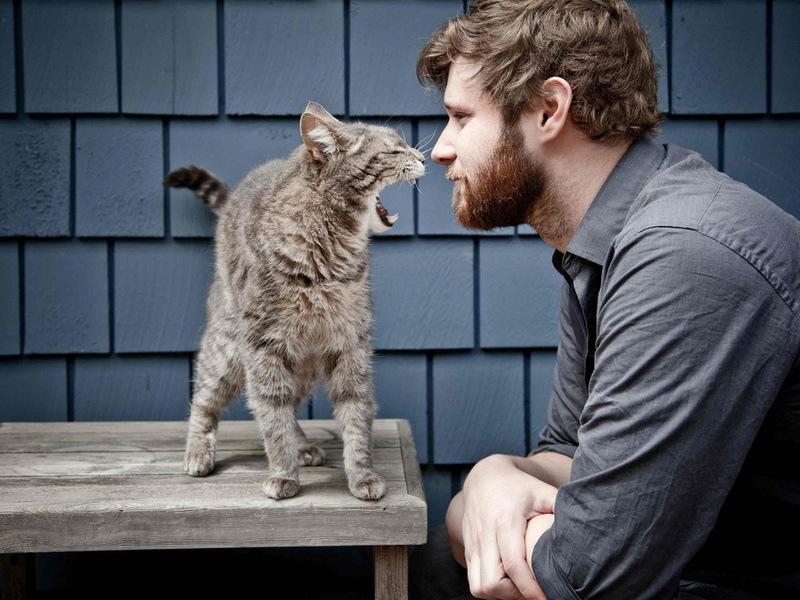
Happy rumbling, meow, snort and even the clatter of teeth, which alters the position of the ears and tail, – here is a partial list of markers of the cat's "language", the mastery of which will allow you to learn how to correctly understand pet.
As the cat learns to speak
Each cat expresses his thoughts and emotions in a special way. The representatives of the Siamese and Oriental breeds and Sphynx tend to spend all day in "conversations" with family, not tired to accompany each movement a plaintive meow or a trusted rumbling. Siberian cat, Burmese, Maine coons, after long walks in alone, sits down in front of the owner with a quiet "meow" and expressive requirement in the eyes. This difference in the level of the cat's sociability is partly due to the peculiarities of the species, but also depends on education of animal and living conditions.
The most striking manifestation of "talkativeness" cats is communicating fluffy mothers with recently born kittens. In the first weeks of life babies kitty uses several types of audio signals, demonstrating tailed crumbs of love and discontent, warning of the dangers. To three months of life kittens possess the speech in full: actively use 16 signals, reciting them with different intonations and tones.
When it's time for "words"
The nature of the sounds produced by cats, differs from the principles of formation of human speech. Due to the special structure of the vocal cords humming literally "say" inhales and exhales, while the language remains virtually untapped. Due to these features kitties can communicate only with close contact with other animals or humans – in the case of distance communication, they prefer to actively use the position of the body, flapping his tail.
With the exception of language etiquette cats are an emergency situation: the proximity of serious danger (the attack of trespassing), the prospect of a trip to the vet or March madness. In such cases, stop the caterwauling will only lacquer coaxing and stroking.

The basics cat's "vocabulary"
A sound signals emitted furry Pets, you can interpret with complete confidence:
- Purr – the sound of roaring engine is a balm for the soul of GoToWebinar, because it indicates the full contentment and tranquility feline soul. Curious to know what breeds and age humming with the same frequency – 25 cycles per minute.
- Snorting cats to use in the moment of encounter with the enemy – other animal or person. At this point, the Pets may periodically tapping the front legs on the ground, trying with sounds and body movements to force the opposite side to retreat.
- Uterine growl and hiss, and the signs unambiguous intentions about ready to full attack. If you're trying to pick up loot from hissing or grumbling cat, be prepared for aggression. These sounds owners should include in your lexicon owners of stubborn cats, not wanting to admit home routine. As soon tailed mischief-maker would do something stupid, take him by the shoulder and start to sizzle a trickster retires and quickly corrected.
- The clatter of teeth should be regarded as a sincere expression of frustration. The clatter can be heard from the night of the hunter, helplessly watching a flying bird through a window.
The above sounds is not a complete list of concepts cat's tongue, which, unfortunately, still remains unexplored. Follow the habits and conversations of pet – soon you will learn to understand his intentions without words.
Distinguish between sounds.
The well-known "meow" might mean in the moment not what you might think at first glance. Scientists have determined that cats can make that cat sound at least two dozen different intonations. Usually sounds low pitched Express irritation and anger, and the high responsible for the area of pleasant emotions, or requests. Here are a few examples.
- Short high-pitched meow. A standard greeting in cat language.
- A few short, high meow in a row. Excited and extremely joyous greeting.
- Meow middle tone. The call for something.
- Lingering subtle meow. Request something, or complaint.
- Consistent loud meowing. Emotional expression of anger, fear, or severe pain.
Also diverse and famous feline purring. It really often means that the cat is now experiencing very positive emotions, but there may be an exception. A cat can purr not only when she is well, but when she is sick in order to calm yourself. In this case the owners will think that their favorite everything is OK, while she is going to need their care and attention. Very short single Moore low tone can mean annoyance or a sudden fright.
Watch for body language.
A lot of information about the mood of the cat and that she is feeling at the moment to tell her tail.
- Hiked to the top of the tail with a twitching tip indicates that the cat is welcome.
- The sharp strokes of the tail may say that the cat feels irritation.
- Wiggling the tip of the tail when the cat is resting means to make it in harmony with oneself and the surrounding world.
- Racing cat with a tail in the shape of an inverted U shape characteristic of the animal during the games, combining the extreme degree of excitation to the brink with fear.
If in the process of observing the tail you will also note the ears and eyes, we get a more informative picture. Here are some typical conditions.
Pleasure and peace.
Eyes. Are in open or half-covered state. The pupils are normal or narrowed in the light size.
Ears. Deployed forward and slightly outward.
Tail. Down, motionless and slightly bent at the end.
In addition, the positive attitude of the cat, as mentioned above is often accompanied by purring. If you stroke it in this time, as if it tells you that the cat feels well and glad you and she likes what you are doing.
Arousal.
Eyes. Wide open, with a playful expression.
Ears. Stand straight and directed forward.
Tail. Is parallel to the ground, or slightly raised and curved.
If the cat wants to play with you, then it will use all available means in order to attract your attention. Will touch you with a paw, to call by voice, or use other ways.
Emotion, anxiety.
Eyes. Wide with enlarged pupils.
Ears. Twitch.
Tail. Low down, often hangs in the back legs. Perhaps the twitching in the area of the tip of the tail.
Anger, aggression, resentment.
Angry mood the cat is difficult to confuse with any other, as it is often accompanied by hissing and other clear manifestations of an irritated state, such as swings a paw with claws, the desire to scratch or to bite the offender.
Eyes. Can slightly hide behind while hissing, or extraction guttural sounds.
Tail. Lowered ago and increased in volume due to the standing on end hair.
The excitement, the emotion.
Eyes. Wide open pupils.
Ears. Pressed to the head.
Tail. Lowered ago.
A scared cat may try to sit down, or run away.
It should also be noted that some breeds of cats may have behaviors different from others. For example, if the cat moves with proushinnoe head to tail, it means its submission. But, the same habits, in principle, characteristic of the Bengal breed and do not mean anything. More accurately determine the mood of your cat will help you the next pictures.




That tells us the cat with tail
The tail can say a lot about the mood of the pet.
- If it hangs loose or wrapped around the cat lying peacefully, it does not mean absolutely nothing.
- If the cat is sharp movement lifts the tail up, rushing to meet you is a welcome signal.
- When a cat turns his back to his master and raises his tail is an expression of complete confidence and even reverence.
- If the pet walks around the apartment with a proudly raised up perfectly straight tail
- it is a signal of dominance, besides expressing satisfaction with life and oneself.
- If the tail is sticking up, but bent at the tip of the hook is the warning that to disturb a cat person should not, for example, during a meal.
- Relaxed the tip from the tube raised tail indicates excitement pet.
- Fluffed the tail raised above the ground at an angle of 45 or even 60 degrees, warns: "I am ready to join the fight." Often this signal is used to intimidate the enemy and combined with a threatening hiss, and a bloodcurdling scream and arched back looks quite impressive.
- If the tail of your pet quickly moves back and forth, so he's very angry and
- annoyed.
- If the cat beats his tail on the sides, be careful: this means that it is ready at any moment to resort to teeth and claws.

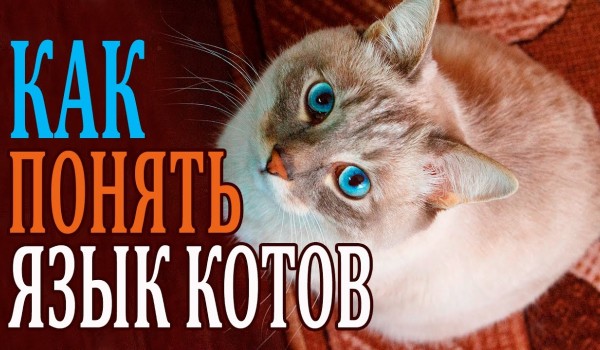
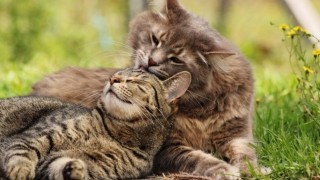
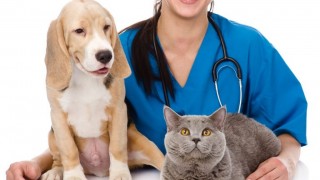
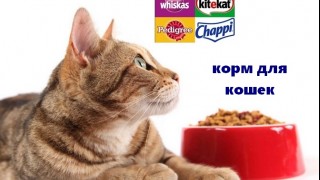
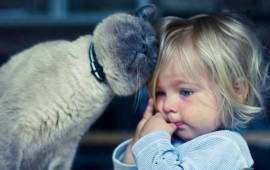
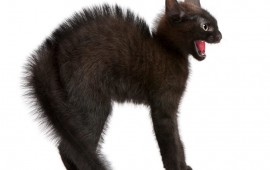
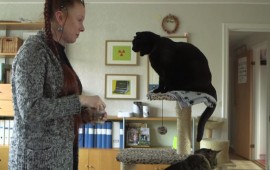

Your opinion - will be useful to all!